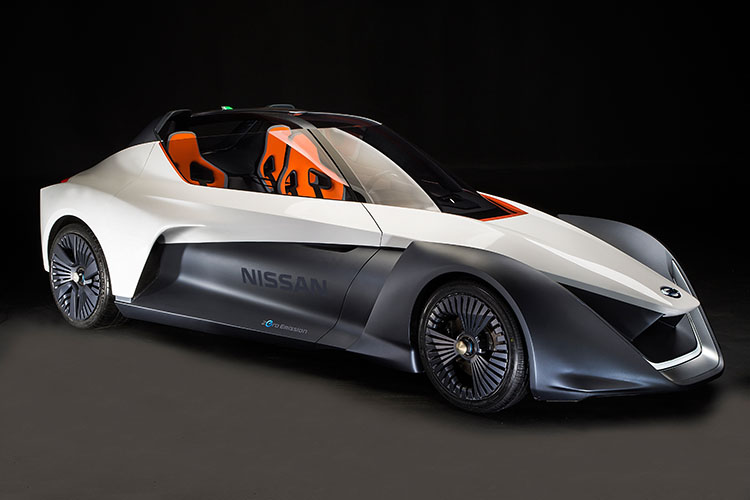
Nissan has unveiled the working prototype of its futuristic Nissan BladeGlider vehicle, combining zero-emissions with high-performance in a sports car design.
The vehicles, developed from concept cars first shown at the Tokyo Auto Show in 2013 symbolize future technologies that will combine Intelligent Mobility, environmentally friendly impact and sports-car driving capabilities, claims the automaker.
The Nissan BladeGlider is an efficient EV that would provide new dimensions of driving fun and excitement – a car that would “glide,” thanks to the near-silent performance of its electric powertrain and aerodynamic shape. It feature an advanced chassis configuration with a narrow front track and wider rear track for optimum aerodynamic efficiency and handling stability.
High-waisted, rear-hinged dihedral doors provide a dramatic entry and exit to the cabin. The open roof of Nissan BladeGlider is reinforced with an integrated roll-over protection structure, providing the exhilaration of an open-topped race car with the safety of a coupe.
Wheel-mounted controls for Nissan BladeGlider’s systems feed into a display showing speed, state of battery charge, regeneration mode and torque map. Flanking the central display are two screens, with the images of rear-view cameras mounted just behind the front wheels. An alternative to door-mounted mirrors, this dual screen design improves the aerodynamic efficiency of the vehicle. The driver sits in arrowhead formation slightly in front of two passengers. The view for all occupants is panoramic thanks to the seamless cockpit windscreen.
Nissan BladeGlider uses 100% electric supplied by a high performance, five module lithium-ion 220kW battery. It is capable of sprinting from 0-100km/h in less than five seconds before reaching a top speed of 190km/h. The rear wheels’ drive is provided by two 130kW electric motors – one for each wheel.
The system features torque vectoring, controlling the torque delivered to the driven wheels, improving the handling even further. With torque vectoring, if the car starts to understeer, it automatically sends more torque to the outside wheel to restore the handling balance. The torque vectoring system has three settings: off, agile and drift mode.
The interior of the Nissan BladeGlider feature four point safety harnesses for each occupant with each seats offering exceptional support to sides and legs of the driver and passengers. The seats features fabric and epoxy resin coating blend, which results in a tough and grippy material that has the effect of comfortably securing occupants in place.
Two Nissan BladeGliders will be presented in Rio de Janeiro where one will be on static display, while the second one will be available for rides to media and VIPs.
Other posts by AF Newsdesk







